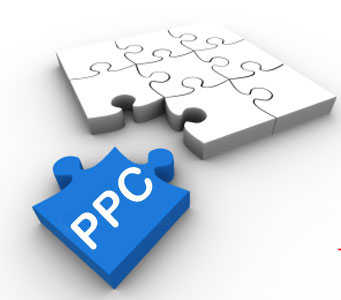The days of just throwing pay-per click (PPC) ads onto Google, Yahoo!, and Bing are long over. Google has made drastic changes over the past couple of years in the way it ranks websites. It’s most recent algorithm update, Hummingbird, was released in August of 2013 which created an uproar in the search landscape and has continued to have a far reaching impact. Google also announced new rules to distinguish popular and authoritative websites on April 9th of this year.
Nowadays a great deal more work should go into launching a successful PPC ad campaign. Businesses have been forced to modify their web marketing strategies and SEO efforts to reclaim their form search rankings.
Fear keeps small businesses from taking risks
Small businesses are still struggling to find their place in online marketing. While SEO firms battle to explain the complex topics such as nofollowing links, disavowing links, reinclusion requests, and editorial appropriateness, the business owner is worried about paying the bills and losing precious time and focus.
For years financial advisors have advocated diversity as the answer to risk. This is no different with it comes to SEO tactics of today. In short, it’s best to avoid putting all your marketing strategies in one basket. Diversifying your marketing tactics helps you hedge your risks and save as much as 25% on marketing costs.
When used effectively, pay-per-click remarketing can reach highly interested customers with custom-tailored advertising.
A recent WordStream study found that, on average, small business owners lose 25 percent of their advertising budget on inefficient PPC remarketing strategies. Here are their findings:
-
The typical small business spends $1,200/month on PPC yet wastes more than 25% of this key investment;
-
This 25% inefficiency has tangible costs for businesses. The company found that these missed opportunities can by quantified in a few vertical industries as:
-
126 lost insurance quotes
-
367 lost bed and breakfast inquiries
-
569 lost product sales for retailers
-
157 lost B2B supplier leads
-
-
Quality Scores are critical to limiting PPC costs. Companies that receive a perfect Quality Score (10) receive a 50% discount on their cost per click (CPC) while companies that receive the lowest score (1) can expect their CPC to increase by 400%;
-
Less than half of small business landing pages have conversion tracking installed, preventing those companies from measuring what’s working;
-
95% of small business accounts do not have call extensions set up on all campaigns.
What is remarketing exactly?
Google put out a broad informational video explaining what remarketing and how you as a business owner can use it to harness potentially lost customers.
“Remarketing is a powerful way to stay engaged with your target audience. Presenting them with highly relevant ads and offers across the Web — and making sure your brand is top of mind when they’re ready to buy –- can radically improve ROI.”
If you have been given another chance to sell to customers through pay-per-click remarketing, you want to make certain that you are turning those first time visitors into dedicated customers.
However, if you are not careful about asking the right questions before launching your pay-per-click remarketing campaign, you could end up losing both time and money.
For example, should you show the same products in your second remarketing chance that the visitors saw on round one, new products, or perhaps complementary products? By answering a few easy questions at the beginning about what you want to achieve through your pay-per-click remarketing strategies, you will avoid making some avoidable but crucial mistakes.
Increase conversion with targeted marketing and optimization
The key is to create targeted advertisements and email newsletters that can increase website conversion rates by as much as 65 percent, according to research conducted by marketing analysis firm Econsultancy.
Econsultancy listed out nine case studies that outline ways to increase your overall conversion the emphasis being on cart abandonment, site optimization, and cart abandonment email campaigns.
Almost three-quarters of baskets were abandoned in Q1 2013
-
According to SaleCycle the average shopping cart, basket and booking abandonment rate reached 73.6% in Q1 2013, up from 70.7% in Q4 2012.
-
Most abandonments happened between 8pm and 9pm, with Thursday the most common day for ditching a purchase.
-
Looking at basket abandonment emails, 48.1% of basket abandonment emails were opened (up from 45.9% in Q4) and 33.3% of these clickers went on to purchase a product (up from 30.1% in Q4).
-
The AOV was 58% higher for purchases from basket abandonment emails compared with direct sales (up from 36% in Q4).
Optimization of any e-commerce website can prevent shopping cart abandonment and the dreaded loss of customers. Slow loading pages in the checkout area can kill conversion up to 66%. According to a case study of slow loading Shopping Cart Pages the “… total cost of abandoned shopping carts for online retailers has been estimated to be over $18 billion a year. 18% of those who abandon carts say the reason was slow page load. That’s more than $3 billion in lost sales due to poor performance. This problem is too great to ignore.”
So how fast exactly should your sales funnel be? “To maximize sales, every single page of a transaction — from landing page through to order confirmation page — needs to be fast.How fast? Less than 2 seconds.” according to unbounce.
Furthermore, Andrew Youderian recently shared the results of his company’s cart abandonment email campaign. Overall, cart abandonment emails made up just under 2% of Youderian’s total revenue generated from email marketing for the quarter. The abandonment emails were sent in three stages: an email reminding them about the cart, a second email asking them to complete their purchase and a final email offering a discount to complete the purchase. The email campaign achieved a recovery rate of between 3% and 11% each month.
Strategies
Many small businesses go the route of hiring SEO specialists to optimize their marketing strategies, simple because they don’t have the time to learn the ins and outs of these complicated tactics.
Ideally though, targeted PPC marketing and other unique search engine features are simpler ways to increase website conversions. For instance the new Google Shopping features allow customers to filter results by merchant special offers. This equates to increased conversion of new leads.
Consumer surveys are another feature currently offered by Google to enable businesses to get customer’s feedback after making a purchase. With the recent updates to Google’s search results algorithm the consumer’s survey results are displayed in the sidebar along with Google Adwords results.
Even with all these added Google features available to website owners, most businesses report that SEO and simple word of mouth advertising are better lead generators than PPC. However, savvy marketers have the perfect opportunity to distinguish themselves from the crowd with a more effective pay-per-click remarketing strategy.





After looking into a number of the articles on your blog, I seriously like your way of writing a
blog. I saved as a favorite it to my bookmark webpage list and will be checking back soon.
Take a look at my web site as well and tell me
your opinion.